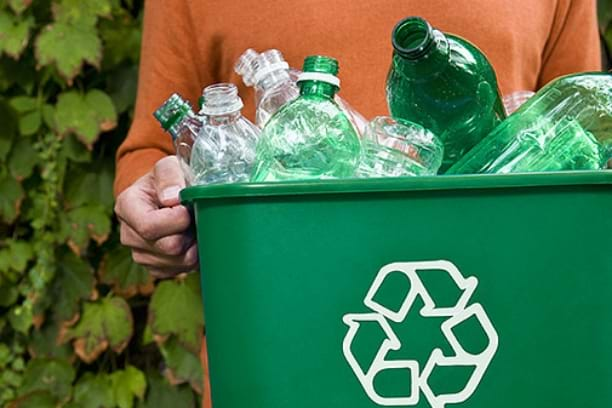Environmental Management System
With the huge rise of travellers over the past few decades, the number of flight movements have increased the resource consumption. Marsa Alam International Airport has set it self the target of using savings and innovative technologies at the airport in order to achieve a growth in air traffic while using few resources. Environmental and climate protection are central management responsibilities that are constantly fully taken into consideration in all planning processes and procedures at the airport. Marsa Alam International airport operator implements an environment and energy management system to ensure that all environmentally relevant operational processes are optimally linked and controlled.

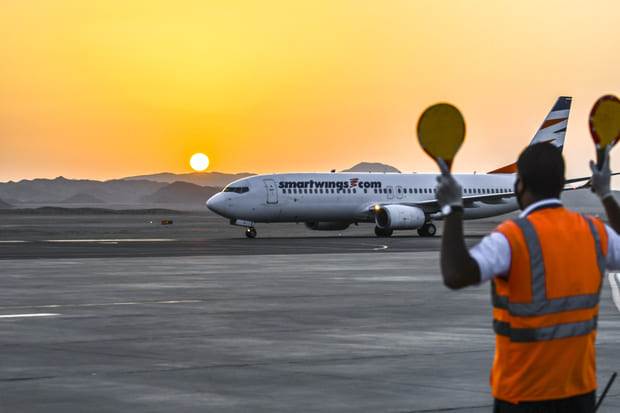
Aircraft Noise
Focusing all air traffic on the Marsa Alam International Airport site means that more people in Quiser and Marsa Alam no longer have to live with aircraft noise.
However, in the vicinity of the new Marsa Alam Airport local resorts residents are now exposed to aircraft noise. This is an issue that we take very seriously. The aim of our Environmental Strategy is provide everyone affected or interested in the impact of aircraft noise with comprehensive information about the new flight routes, crossing altitudes and operational direction forecasts. New stationary and mobile noise measurement points will fully document any changes that take place after RMF’s opens.
Our aim is to enable our neighbors to advise us of particularly loud flight events so that we can contact the airlines. We are currently engaged in a dialogue with the airlines representatives to develop a package of measures for the long-term reduction of aircraft noise. The Noise Protection Program was restructured in 2012 and is now more citizen-centered.
Air Quality
When it comes to air quality, the airport operators also believe in ensuring complete transparency.
In a voluntary environment study program we use bio monitoring to analyze and document airborne pollutants in the vicinity of the airport.
The data generated by the air measurement points around the airport are published daily on our website. Documents of all activities, data and results of our environmental and climate protection schemes in a comprehensive annual environmental report.
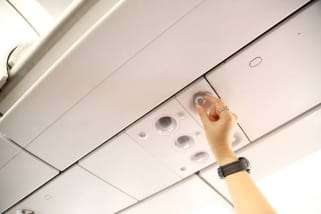

Climate
A core element of the Green Airport strategy is RMF’s Climate Protection Program, which stipulates that energy consumption at Marsa Alam International Airport is to be steadily reduced after the airport opens. At the same time, the strategy aims to avoid the emission of climate-relevant gases by using renewable energy.
Environmental Management
With the huge rise of travellers over the past few decades, the number of flight movements have increased the resource consumption. Marsa Alam International Airport has set it self the target of using savings and innovative technologies at the airport in order to achieve a growth in air traffic while using few resources. Environmental and climate protection are central management responsibilities that are constantly fully taken into consideration in all planning processes and procedures at the airport. Marsa Alam International airport operator implements an environment and energy management system to ensure that all environmentally relevant operational processes are optimally linked and controlled.
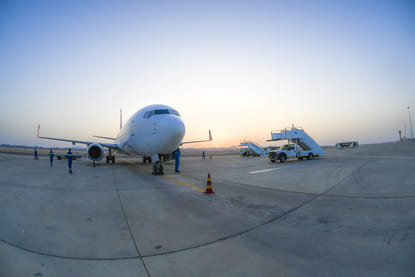
Environmental and Energy Guidelines
Our aim is to guide and shape the dynamic growth of air traffic in the region around RED SEA city’s in a responsible manner to minimize its impact on local residents and employees, the environment and the climate.
RMF’s has an Environmental and Energy Management System that aims to continually reduce the negative impact of operational activities on the environment and the climate while at the same time constantly improving energy efficiency. Modern systems, procedures and the clear definition of responsibilities and processes ensure that exceptionally high environmental standards are adhered to throughout the company.
Environmental and Climate Protection as corporate targets
We view environmental and climate protection as cross-functional tasks to which all the company’s employees make a contribution in their specific sphere of work and responsibility. The Board of Management and all executives have set environment and climate protection as key strategic goals. Any potential negative impacts of corporate or strategic decisions on the environment or the climate are considered in the basic evaluation and preliminary planning stage and measures are taken to avoid them. Full compliance is ensured with all legislation pertaining to environmental protection and official regulations, and where possible these standards are exceeded.
Ongoing improvement of our environmental performance and energy efficiency
By bringing together the most advanced technology, optimized operational management and environmentally-conscious user behavior, we are constantly reducing the amount of energy and resources we consume. We have set fixed goals to enable us to reduce our consumption of energy and resources and minimize the negative impact of our operations on the environment. We continually monitor, audit and document the environmental impact of our operations and our consumption of energy and resources. We take prompt action if compliance with our strict environmental and energy goals is jeopardized.
Raising environmental awareness and including our business partners
We work to inform and train our employees to have a high awareness of the environment and climate protection while carrying out their duties. Airlines, service companies and other business partners are fully included in our Environmental and Energy Management System.
Information and dialogue
We actively seek an open and objective dialogue with the airport’s many different stakeholders. We regularly inform the general public about the impact of our operations on the environment and our efforts to protect the environment and the climate.
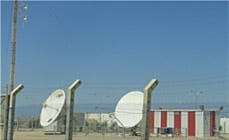
Energy
The aim of EMAK ENERGY is to supply the airports we operate with secure, efficient and environmentally sustainable energy. BER has an advanced energy infrastructure which will significantly increase the company’s resource efficiency when the new airport opens.
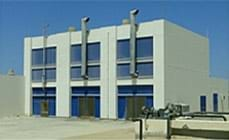
Soil and surface water protection
Water is a valuable commodity, and there is only a limited quantity on this earth. One of the declared objectives of RMF is to work to reduce the amount of water we use and to avoid harmful impacts on the soil, groundwater and the local watercourses around the airport. At RMF Airport we have installed technical systems in which water-polluting substances are stored and/or used. These include refueling stations, operating fluid stores and elevator systems. At RMF airport most aircraft be refueled via G.S.E. water tanks. To protect the soil, these installations will be regularly inspected by experts.
Waste water treatment
The airport operator has installed a waste water network with numerous pumping stations and pretreatment tanks. All buildings at the airport, including the terminal, are linked to this sewage network, which has separate pipe networks for waste water and rainwater runoff. Waste water is treated in the treatment station operated by the RMF authority.
The composition of the sanitary water from the terminal and the office buildings, and the waste water from the aircraft toilets, is identical to that of household waste water and is discharged straight into the to the local sewage system.
Waste water from restaurants and other services is pre-treated in grease removal tanks. Waste water from operational areas, such as aircraft maintenance, the special equipment workshop or aircraft cleaning, is intensively pre-treated as required before being discharged with the remaining waste water streams to the treatment station.
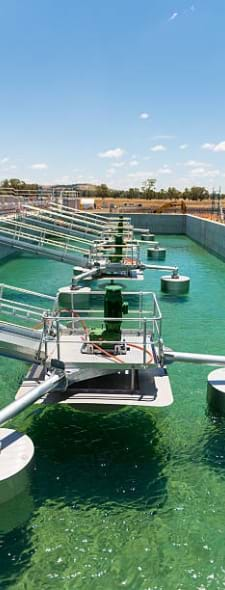
Treating rainwater runoff
To collect and treat rainwater, the RMF airport has an extensive sewerage system as well as numerous pumping stations, reservoirs and treatment plants. Due to its varying qualities and degrees of contamination, all rainfall at the airport is collected, treated and discharged separately.
Rainwater runoff from roofs and parking areas is not contaminated with pollutants and is allowed to drain into the ground where it accumulates.
Rainwater from the runways and taxiways around the apron, which in cold temperatures is potentially contaminated with de-icing fluid, is pre-treated in a ground filter in the winter. In the summer, this rainfall is usually discharged into a channel without pre-treatment or allowed to drain into the ground.
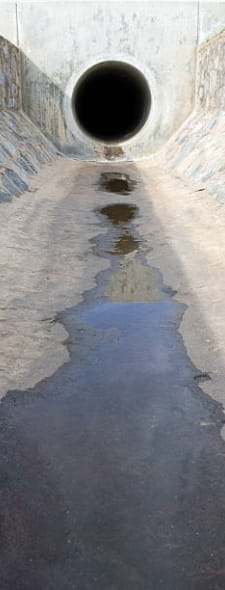
Waste
The airport operator has installed a waste water network with numerous pumping stations and pretreatment tanks. All buildings at the airport, including the terminal, are linked to this sewage network, which has separate pipe networks for waste water and rainwater runoff. Waste water is treated in the treatment station operated by the RMF authority.
The composition of the sanitary water from the terminal and the office buildings, and the waste water from the aircraft toilets, is identical to that of household waste water and is discharged straight into the to the local sewage system.
Waste water from restaurants and other services is pre-treated in grease removal tanks. Waste water from operational areas, such as aircraft maintenance, the special equipment workshop or aircraft cleaning, is intensively pre-treated as required before being discharged with the remaining waste water streams to the treatment station.
